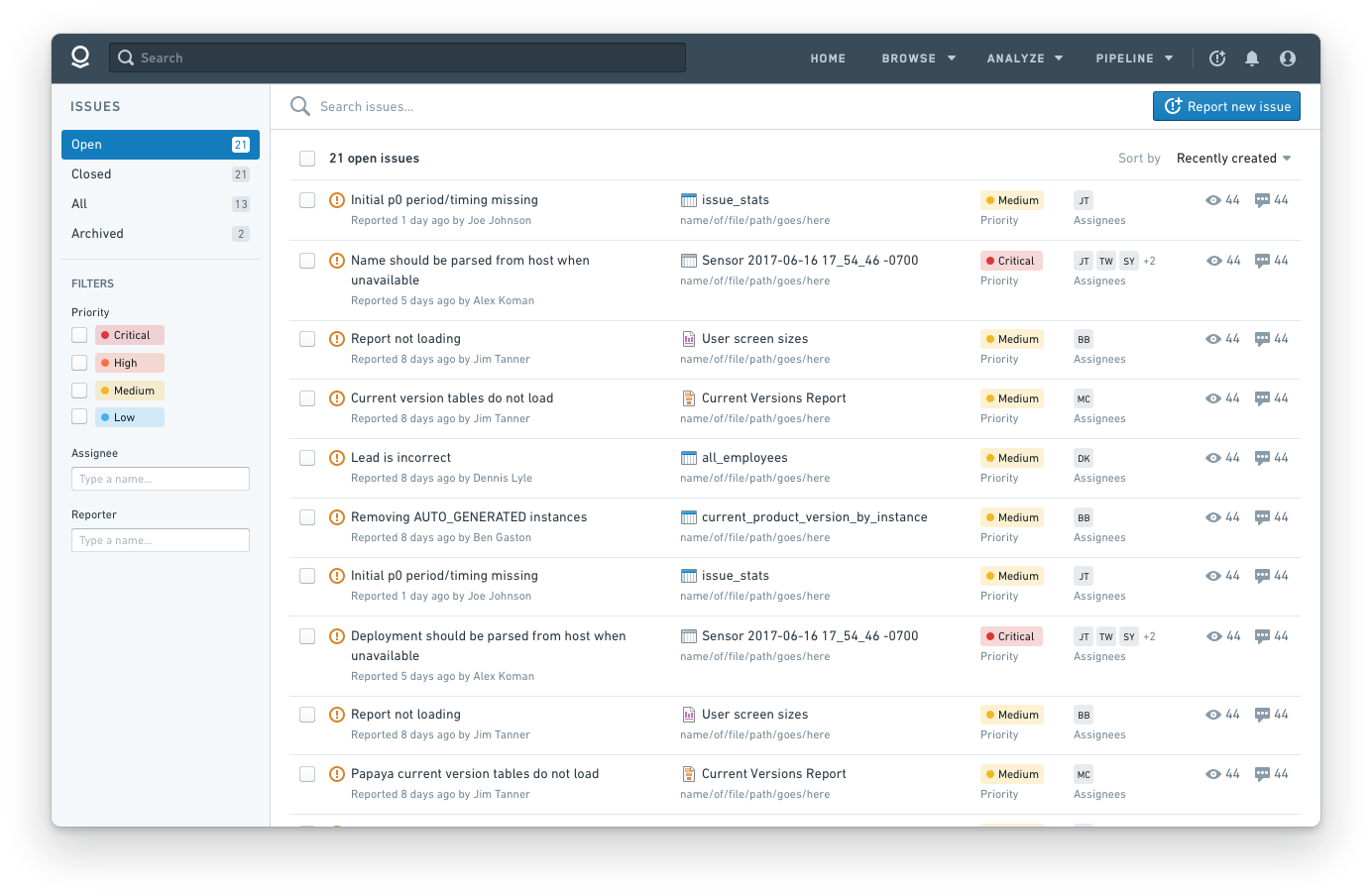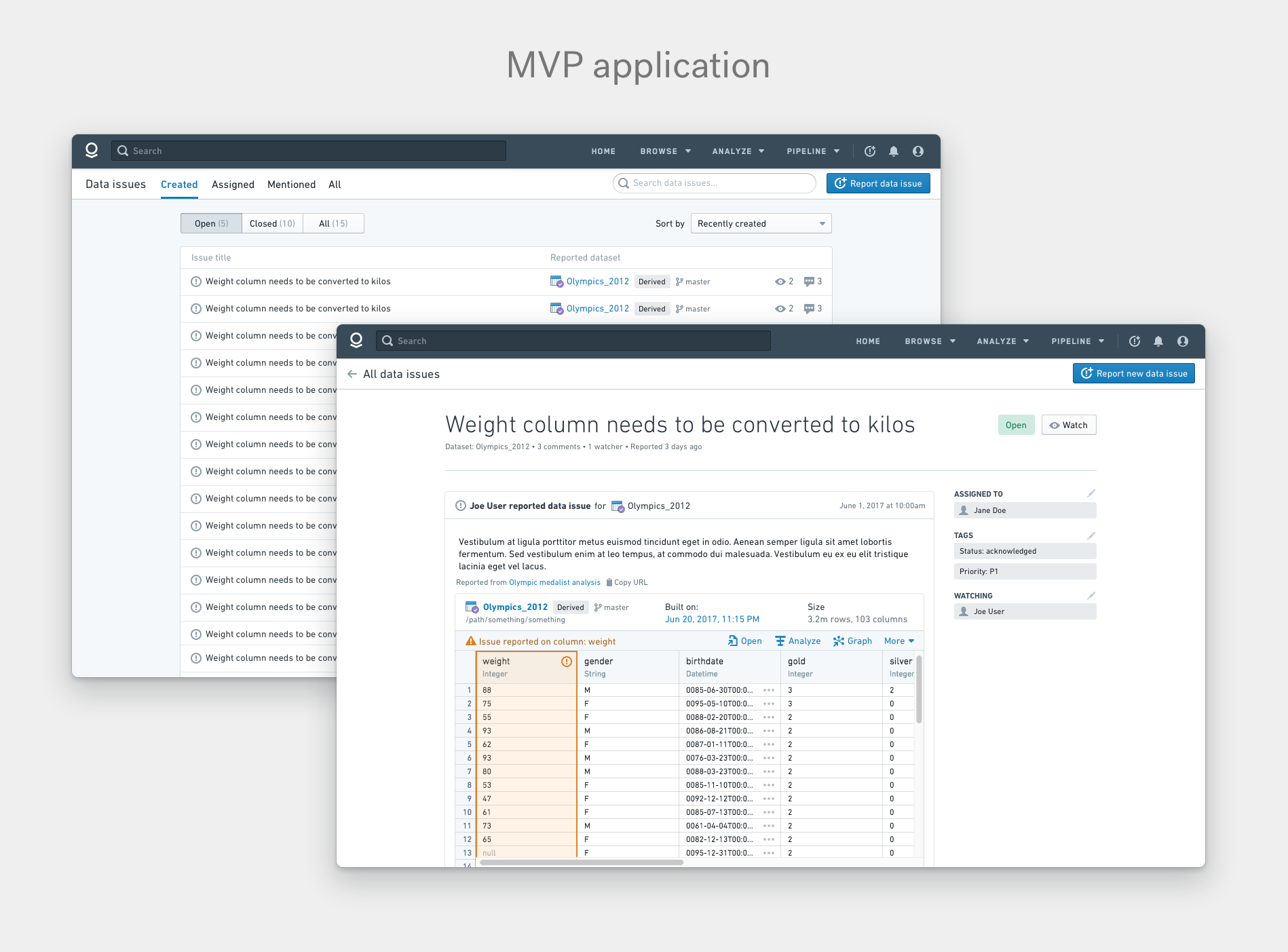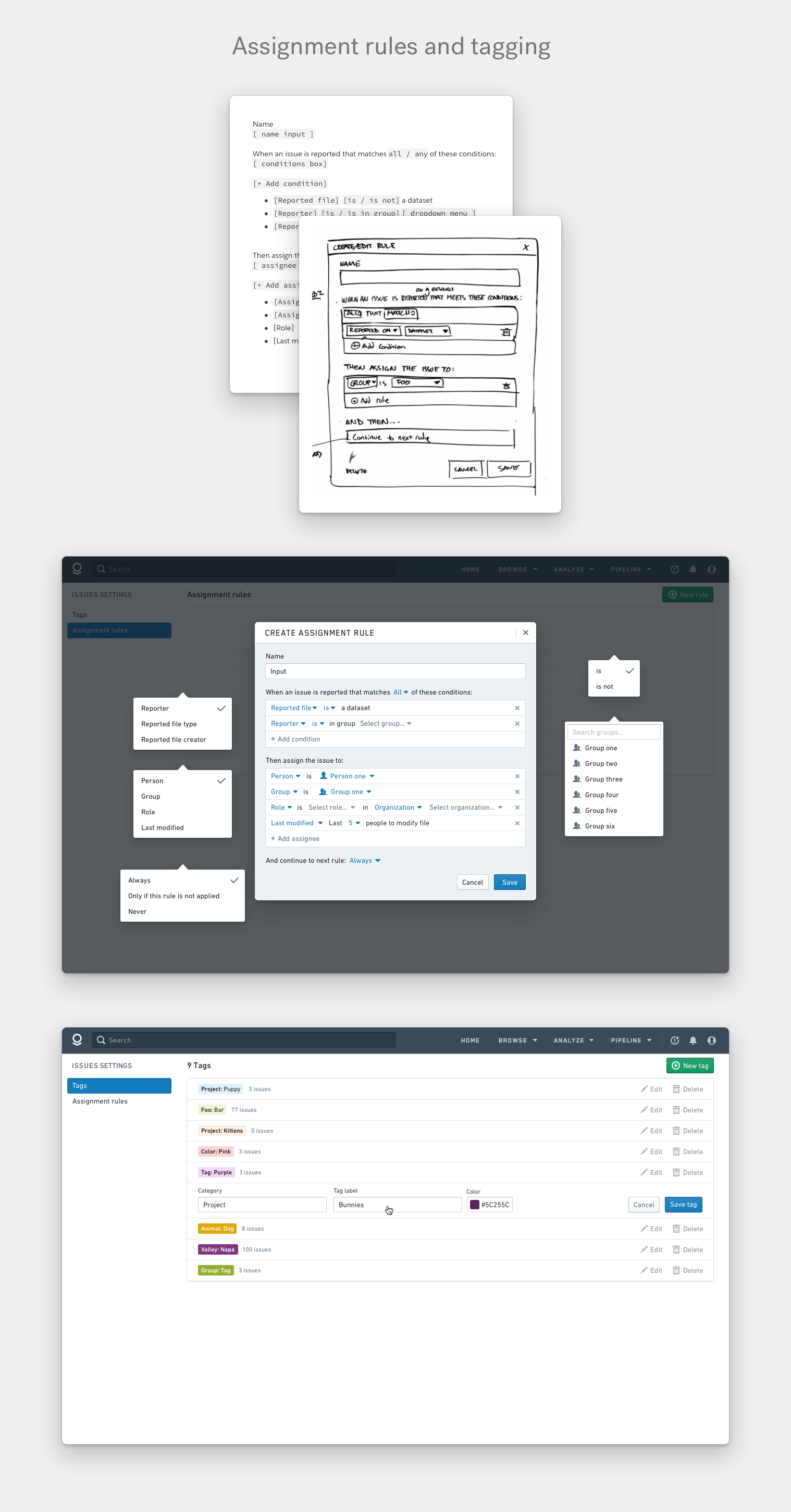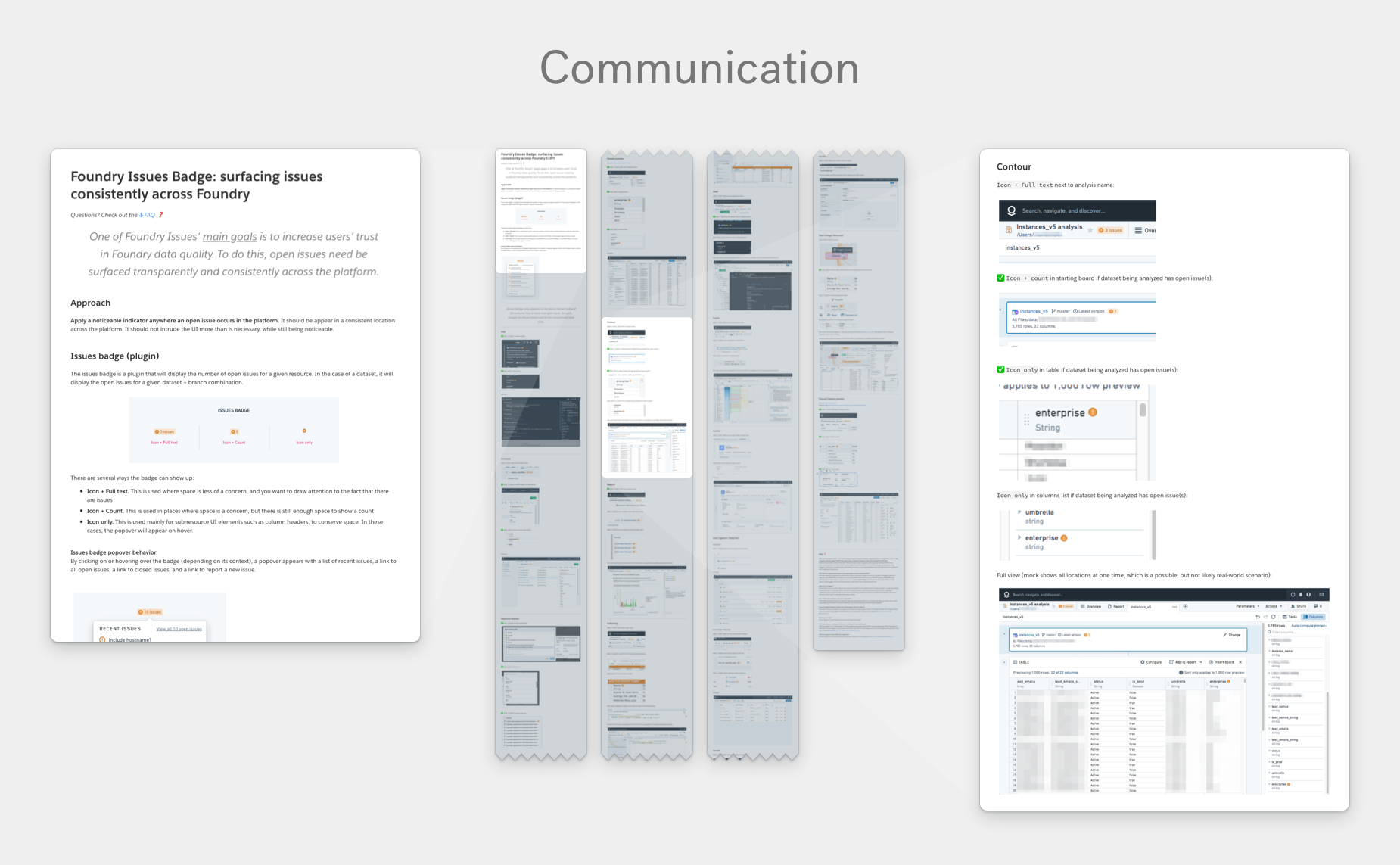Foundry Issues
Foundry Issues is an integrated issue flagging and tracking application for Palantir Foundry. Over a period of several months, I worked with a small team (mostly one front-end developer) to take Issues from an initial concept to an application/integration that was generally available. Below is the Issues home page, that aggregates issues across the platform.

The project was started when Foundry’s chief architect shared the initial concept for the project with a small team composed of myself, a frontend dev, and a backend dev.
My first step was to create some initial documentation and sketches to orient the team. I documented the value proposition, core assumptions we were holding, some loose ideas for an MVP feature set, and some initial sketches for parts of the UI.

The next step was to design, develop, and ship an MVP. This was a close collaboration with the front-end developer on the project. It involved designing an issue page to view and track issues, a listing page to aggregate issues, and various components to be used throughout the platform to create and surface issues.


After the MVP was released, we worked with a small set of initial customers to refine and iteratively improve the product. This work included redesigning the home page, expanding the focus to include resources beyond datasets, and to add administrative controls such as assignment rules and tagging.


I also designed various components and microinteractions for the product. These included an issues badge that was able to be embedded throughout the platform to display issues within a resources’ context.



A systematic approach and clear communication were critical to the the project’s success. This was due to the fact that the issues badge was surfaced in every application throughout the platform. I not only mocked up where and how the badge would surface in each application, I shared and collaborated with each team so they would be prepared for the change. It was as much about the design as it was about managing the social aspects of change.
